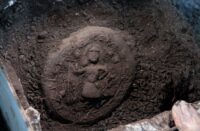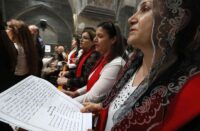Originally published in Worthy News
The Israeli government and military establishment have declined to comment on the reports, although one Israeli official told Reuters he thought Israel had carried out the strike, but wasn’t certain. Israel has repeatedly warned that any attempt to transfer to Hezbollah chemical or other game-changing weapons would constitute a “red line” and precipitate military action.
Earlier Thursday, on the heels of reports that the airbase had contained advanced, Russian-made anti-aircraft missiles, Al-Arabiya reported that Israel had attacked not one, but two targets in the civil war-torn country.
Al-Arabiya’s report said two targets had been hit in Syria on Wednesday night – not just the Latakia air defense base, but a target in Damascus as well. Both targets were said to have contained shipments of Russian SA-8 anti-aircraft missiles meant for Hezbollah, which were reportedly completely destroyed.
A map of the Latakia airbase posted online shows three batteries of the Russian-made surface-to-air anti-aircraft missile at the base, outside Snobar Jableh in the country’s coastal Latakia region.
Earlier Thursday, Al-Arabiya quoted opposition forces as saying the base held S-125 missiles.
The S-125 is especially effective against maneuverable low- to medium-altitude targets, including aircraft. The Egyptians used such missiles with some success during the War of Attrition and the 1973 Yom Kippur war, and batteries used by Iraq may have knocked down coalition aircraft in the First Gulf War.
The system has undergone improvements since then, but countermeasures have also progressed significantly.
A massive explosion was reported at the base late Wednesday night, with some reports that it was targeted by missiles fired from the sea. The Syrian news outlet Dam Press, considered loyal to the regime of Bashar Assad, reported that the site was damaged but that there had been no injuries.
Earlier on Wednesday the Lebanese government news agency reported six Israeli aircraft flying through Lebanese airspace along the coast north of Beirut.
The coastal strip of Syria, encompassing the cities of Tartous, Latakia and Baniyas, is part of a predominantly Alawite portion of the country which remains loyal to the Assad regime in its lengthy campaign against rebels.
Israel has been accused of striking Syrian sites in the past, including in January and May this year. Israel refused to confirm the reports that it targeted weapons transfers, possibly to the Lebanese terror group Hezbollah, which has remained loyal to Assad during the country’s bloody civil war.
Syria is reportedly in the midst of upgrading its missile defense system to the Russian-made S-300, a move Israel has lobbied against.
The Associated Press contributed to this report.








Am Israel Chai
Am I a little retarded but is this prehaps where all the weapons of mass destruction disappeared to?The press are very quiet considering it is part of their job to find the answers to where the womd dissapeared from Iraq.